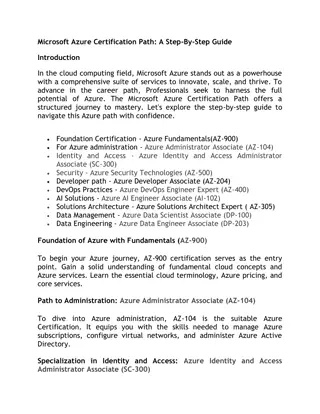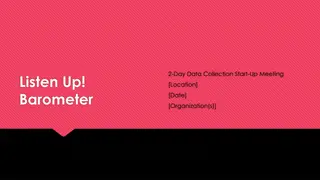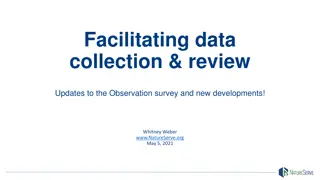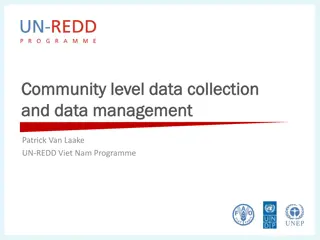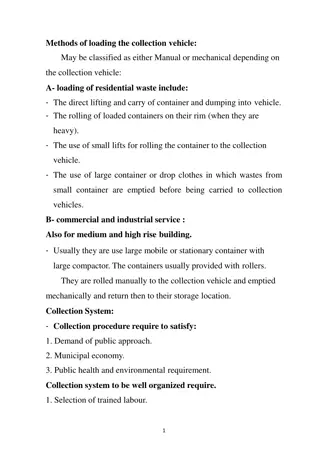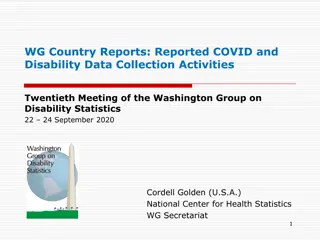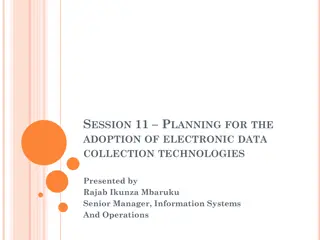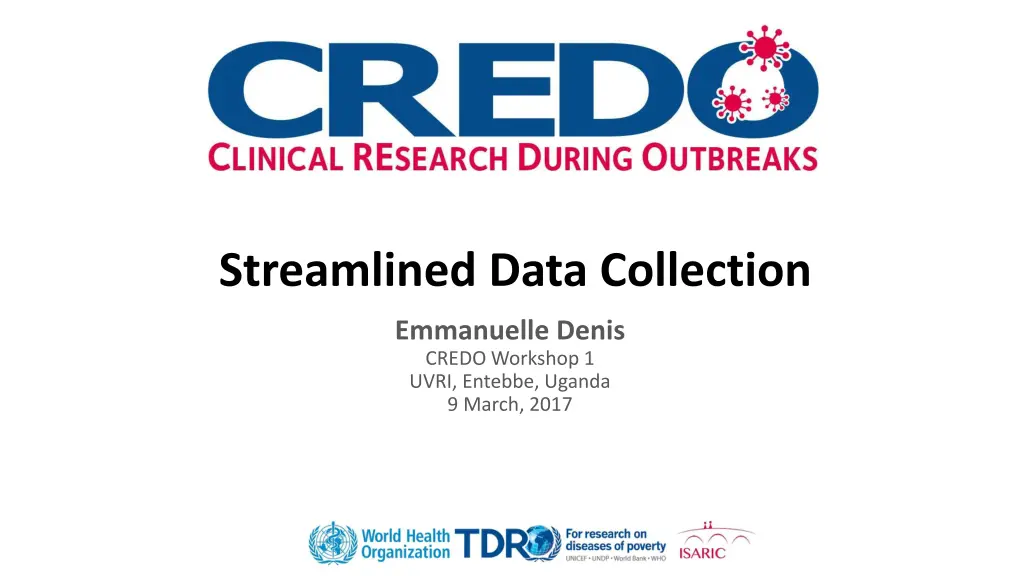
Efficient Data Collection Strategies for Outbreak Research
Learn essential tips for streamlined data collection, management, and sharing in outbreak research. Explore the benefits of efficient data collection, understand the role of data harmonization, and discover platforms for sharing protocols. Simplify your approach, plan ahead with case report form development, and leverage existing tools to enhance your research process.
Download Presentation

Please find below an Image/Link to download the presentation.
The content on the website is provided AS IS for your information and personal use only. It may not be sold, licensed, or shared on other websites without obtaining consent from the author. If you encounter any issues during the download, it is possible that the publisher has removed the file from their server.
You are allowed to download the files provided on this website for personal or commercial use, subject to the condition that they are used lawfully. All files are the property of their respective owners.
The content on the website is provided AS IS for your information and personal use only. It may not be sold, licensed, or shared on other websites without obtaining consent from the author.
E N D
Presentation Transcript
Streamlined Data Collection Emmanuelle Denis CREDO Workshop 1 UVRI, Entebbe, Uganda 9 March, 2017
Data Data: management, harmonisation and sharing : management, harmonisation and sharing module module Intended Learning Objectives At the end of the module participants will be able to: Explain the important role of data harmonisation and sharing in outbreak research Describe the elements of a data management plan Identify outbreak research platforms for sharing and developing protocols and data capture tools
Streamlined data collection Streamlined data collection Intended Learning Objectives To understand the benefits of streamlined data collection To be able to plan efficient data collection for a study
Keep it simple Keep it simple For every question, measurement or test ask: What am I collecting this information for? Avoid collecting extraneous ( just in case ) data - remember that all data collected will need to be entered and cleaned Collect only the data variables that are required by the protocol and needed for your database The ultimate goal is to ensure that the information generated from the data can answer the research question
Plan ahead Plan ahead Case report form (CRF) development should be done concurrently with protocol development Allow plenty of time for revisions and for validation and testing if you are going to use an electronic CRF
Dont reinvent the wheel Don t reinvent the wheel If you have run other clinical research studies in your institute you can probably adapt their CRFs particularly for standard modules like demographics or adverse events ISARIC has freely available Severe Acute Respiratory Infection and Viral Haemorrhagic Fever Data Tools https://isaric.tghn.org/protocols/
Reasons for data collection Reasons for data collection Why? When? Who? Eligibility Screening Everyone Identify subgroups Randomization Everyone Safety Every follow-up Everyone (not just those on treatment) Compliance measures Particular times during follow-up Random sample or everyone? Outcomes Every follow-up Everyone Other outcome measures Final follow-up Random sample or everyone Table courtesy of Dr Marion Mafham, Senior Clinical Research Fellow, CTSU, University of Oxford
Recommendations for CRF design Recommendations for CRF design Necessary Data Only Design the CRF along with protocol to assure collection of only these data the protocol specifies. CRFs should avoid collecting redundant data and should instead focus on collecting only the data needed to answer the protocol questions and to provide adequate safety and efficacy data Minimise the collection of data as free text
Recommendations for CRF design Keep questions, prompts and instructions clear and concise. Design the CRF to follow the data flow from the perspective of the person completing it, taking into account the flow of study procedures
Recommendations for CRF design Avoid recording calculated data Example: Body mass index > record weight and height
Recommendations for CRF design Avoid recording calculated data Example: Dates Time Point Date Calculation Baseline 16-Oct-2017 =baseline Day 1 17-Oct-2017 =baseline+1 Day 3 19-Oct-2017 =baseline+3 Day 7 23-Oct-2017 =baseline+7 Day 14 30-Oct-2017 =baseline+14
Recommendations for CRF design Avoid redundant data points within the CRF whenever possible. -> i.e. don t collect the same information twice!
Recommendations for CRF design Document the process for CRF design, development, approval and version control. Make the CRF available at the clinical site prior to enrolment of a subject. Document training of clinical site personnel on the protocol, CRF completion instructions and data submission procedures prior to enrolment of a subject.

